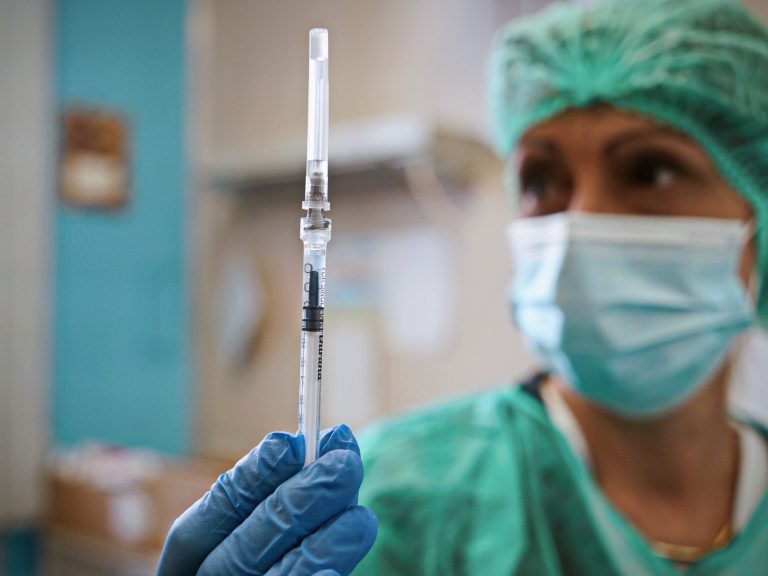Cataract and glaucoma – modernized treatment

Modernized or completely new surgical techniques for cataracts and glaucoma eliminate the disadvantages of older procedures, says Prof. Jacek P. Szaflik, member of the board of the Polish Ophthalmological Society and surgeon at the Laser Eye Microsurgery Center in Warsaw.
Professor, what does the most common procedure for cataract removal look like these days?
Typically, it involves breaking up the cloudy lens with ultrasound, sucking out the fragmented tissue, and then replacing the old lens with a new, artificial one. This method is called phacoemulsification. It is safe, but it cannot be used in every case.
Why?
The use of ultrasound increases the temperature in the anterior chamber of the eye, which is harmful to the delicate endothelial cells of this chamber. They are destroyed when the temperature is increased by 1–1.5°C. Therefore, phacoemulsification treatment is not recommended for people with defective endothelium, which happens in various situations, for example in diabetics.
What in such cases?
There is an innovative solution in the form of femto-phaco treatment. A femtosecond laser is used to incise the cornea and break up the cloudy lens, which does not cause significant changes in temperature inside the eye because it generates ultrashort pulses. However, for now, the femto-phaco procedure is available only in a few centers in Poland, including: at the Laser Eye Microsurgery Center in Warsaw. The use of a femtosecond laser is also very beneficial in patients in whom modern “premium” lenses are implanted.
Have there been any innovations in the field of implanted lenses?
Yes. For some time now, we have had lenses with an extended focal length, or extended depth of field, on the market. They offer almost as good vision at various distances as multifocal lenses, and at the same time much better vision comfort. The disadvantages of multifocal lenses related to their complicated optics, i.e. generating glare or halos around light sources, are largely limited. This especially applies to the latest generations of extended focal length lenses, which appeared in 2021. It can be said that this is a successful compromise and the best choice for many patients. However, the choice of such a lens is available mainly in private facilities.
No refund possible?
Unfortunately not. In surgeries financed by the National Health Fund, single vision lenses are most often implanted, and it is not possible to pay extra for a more advanced lens. When making a choice, the patient must remember that cataract surgery is performed once in a lifetime. If he chooses a single vision lens, he will be doomed to additional glasses correction.
Let’s move on to the second cause of blindness in Poland after cataract, i.e. glaucoma. What’s new here?
We definitely need to mention the procedure using the Preserflo MicroShunt® implant, first performed in Poland in 2019. This is a micro-invasive procedure because such an implant is implanted from the outside through an intrascleral canal with a diameter of only 0.5 mm. This eliminates the risk of complications related to performing activities inside the eyeball, and the patient’s recovery time is significantly shortened. Such an implant facilitates the outflow of aqueous humor, which reduces increased intraocular pressure, which is the main cause of optic nerve degeneration in glaucoma. We are currently also testing the effectiveness of several new procedures from the group of minimally invasive antiglaucoma surgeries.
To summarize our conversation, I would like to ask about “combined” surgeries for coexisting glaucoma and cataract. Can these innovative treatments be combined?
Yes! At CMO Laser, we offer, for example, simultaneous removal of glaucoma and cataract by combining procedures: implantation of the Preserflo MicroShunt implant and phacoemulsification with the implantation of a modern artificial lens. This is a very advanced treatment option, and we additionally limit the number of treatments needed to remove both of these frequently co-occurring diseases.
Prof. Ph.D. n. med. Jacek Szaflik – head of the Department and Clinic of Ophthalmology, Faculty of Medicine, Medical University of Warsaw, member of the board of the Polish Ophthalmological Society, director of the Independent Public Clinical Ophthalmological Hospital in Warsaw. He specializes in anterior segment surgery (treatment of cataracts and glaucoma), treatment of cornea and eye surface diseases, and transplantology in ophthalmology. Author of numerous Polish implementations of ophthalmological innovations.






